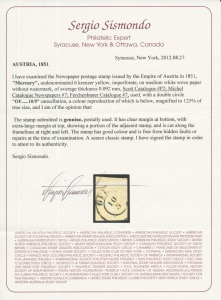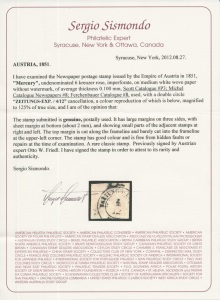Broadly speaking, there are two types of rarities-rarities that were available to anyone who walked up to the postal counter and wanted to mail a letter, and rarities that are the result of some printing error or limited sales availability of a stamp. Rarities of the second class are items like the Airmail Invert of the Unites States or the US Reissues and Special Printings. These rarities continue today and are the hope of every collector who saunters up to a postal counter with dreams of being sold some valuable printing error by accident.
Rarities of the first group were almost all issued by 1860. They are stamps that are rare because they were issued before there really was any philately, even before the name for our hobby-philately-was invented. They are stamps that are rare because no one thought to save them or even look for them. When philatelists started looking for stamps about 1860 they didn’t even know what stamps were out there to look for. There were no catalogs and rummaging through old correspondence surely had a wondrousness about it that none of us can today imagine. It is as near as any hobby can offer to what the early explorers must have felt-discovery without even knowing what there could be.
The earliest Newspaper stamps of Austria-the Mercuries as they are called because they picture the Roman god of communication Mercury- are among the rarest of this first class of philatelic desirables. Austria was among the first countries to issue stamps purely for use on newspapers. The stamps themselves were very scarce- postal regulations didn’t require their use- and before collectors were looking for stamps almost no one saved the wrappers that their newspaper came in, tearing them off to get to their news. These rare stamps come in three denominations (they are referred to as the Yellow, Rose and Scarlet Mercuries) and they are among the greatest of the classic rarities.
These two stamps above- the Yellow which catalogs $10,000 and the Rose which catalogs $33,500 were found by us in an old collection that had come to us for appraisal. We got Sismondo certificates on them (which are almost as pretty as the stamps). I don’t know who was happier at our discovery-us-or the owner who had had what she thought was a dinky old family collection of little to no value. We did have an exciting day when we found it and for a few minutes felt a bit like Magellan.





